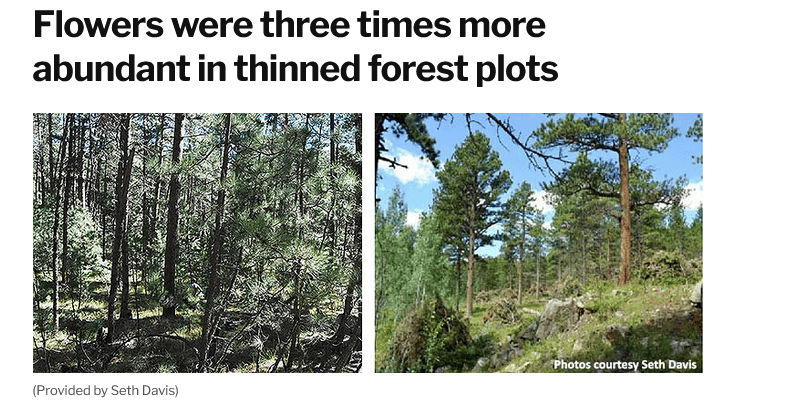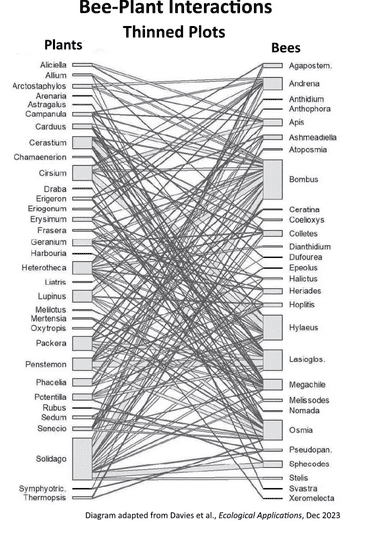TSW could really use someone to report on legislation.. there was a Committee Hearing today on several bills that may be of interest. Here’s the FS testimony.
Here’s Hannah Downey’s written testimony.
The Root and Stem Project Authorization Act
The Root and Stem Project Authorization Act (H.R. 674) is a bipartisan proposal to add more resources to advance forest restoration projects through the often-cumbersome environmental review process. For projects on Forest Service or Bureau of Land Management land that have been collaboratively developed and meet local and rural community needs, a sponsor can front the funding for an approved outside contractor to complete the NEPA analysis for the project and be repaid through any receipts generated by the project that would otherwise go to the federal treasury.The “A to Z” Project
The Root and Stem Project Authorization Act builds on the “A to Z” pilot project in the Colville National Forest in Washington.
This innovative project was highlighted in PERC’s 2021 Fix America’s Forests report as a way to leverage the value of timber to reduce bureaucratic burdens.
Several years ago, the Northeast Washington Forest Coalition, a collaborative group of public and private partners, was looking to advance a forest project, but the Colville National Forest did not have the financial or staff resources to complete environmental reviews for the project. The coalition proposed allowing timber contractors who would perform the harvesting and restoration work to also bear the costs of doing the NEPA analysis. This “A to Z” project—so named because the winning bidder would be responsible for the entire process from initiating the project, to environmental review, to implementation—presented the opportunity to use the commercial value of harvested timber to advance the project and fund forest restoration.A local sawmill, Vaagen Brothers Lumber, won the 10-year Forest Service stewardship contract in 2013 to test the privately funded, publicly managed NEPA process. It subcontracted with a third party to plan and perform the environmental analysis. To avoid any conflict of interest, the subcontractor’s performance was overseen by agency personnel rather than Vaagen Brothers. The NEPA analysis was completed in 2016, and the Vaagen Brothers began commercial thinning operations on more than 4,500 acres of national forest lands that contain excess wildfire fuels.
With a mill that can process small-diameter trees and nearby processing facilities that can turn that timber into laminated building products, the contract provides Vaagen Brothers with a supply of merchantable wood products. In exchange, the terms of the stewardship contract also require that the private company rehabilitate streams, replace culverts, restore roads, and control noxious weeds, leaving the forest ecosystem more resilient to insects and disease, enhanced wildlife habitat, and a substantially reduced risk for severe wildfire.How It Works
The Root and Stem Project Authorization Act establishes a formal process for a project sponsor to provide the Forest Service and Bureau of Land Management upfront funding to hire an approved contractor to conduct the NEPA analysis for a collaboratively designed restoration project. It also adds the requirement that receipts generated by the project can be used to repay the sponsor instead of being deposited into the general fund of the treasury. Building on the success of the “A to Z” project, this approach could substantially speed up needed activities while freeing up agency resources and personnel for other projects. The Forest Service and Bureau of Land Management can currently contract with non-federal parties for environmental analysis and accept outside funds to pay for that review, as demonstrated by the “A to Z” project.The significant reform that the Root and Stem Project Authorization Act would make is to allow a project’s timber revenues to reimburse the party who funds the environmental review. This improvement would create more opportunity and motivation for forest collaboratives, conservation organizations, timber companies, and other entities who would benefit from the restoration project to provide the initial funding.
Under this proposal, the Forest Service and the Bureau of Land Management would maintain an approved list of non-federal, third-party contractors in each state that the agency can hire to complete NEPA analyses and any consultations required under the Endangered Species Act. For forest restoration projects that have been collaboratively developed on federal lands, a project sponsor could propose a stewardship contract and provide the federal land management agency with the funding to hire one of the approved contractors to conduct the necessary project analysis. Once the project was approved, the federal land manager would have to solicit bids to carry out the project and use any available receipts generated by the project to repay the sponsor.
Though outside parties would be providing upfront funding and completing the environmental review documents, the federal land management agency would still retain authority over the environmental review and the project. Additionally, the relevant secretary would still be required to determine the sufficiency of any documents and authorize the project to proceed.Improving Forest Restoration
At a time of great need for more forest restoration activities, the Root and Stem Project Authorization Act would bring more resources to the table to get important work done. Bringing in outside funding will not only benefit the collaborative projects reviewed under the Root and Stem authority but will also allow limited Forest Service and Bureau of Land Management resources to be spent on other priorities. Ultimately, more needed forest restoration projects—both ones that do and do not generate revenues—will make it through the environmental review process so that work can begin on the ground to reduce fuel-loading and protect our forest ecosystems from catastrophic wildfires.







